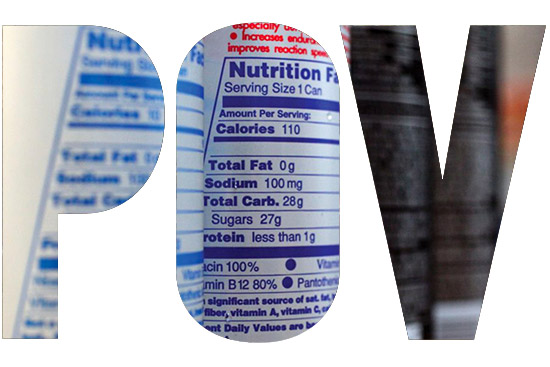FDA’s Plan to Delay New Food Label Is Misguided
Will postpone opportunity for consumers to improve their diets

I’m confused—and mad—about the Food and Drug Administration’s plan to delay the implementation of the much-needed new food label, the iconic rectangle of nutrition information on food packages.
A year and a half ago, First Lady Michelle Obama announced that she was thrilled that the FDA had finalized a new and improved label and that it would be required on all packaged foods by July 2018. But now the FDA has proposed pushing back the required date to January 2020.
I am scratching my head on this one. Truthfully, in this era of transparency, I need to disclose that I am actually knocking my head against the wall, because this delay will keep consumers from getting information they need about the foods they eat.
More than 110 million Americans, half of all adults, have one or more preventable diseases that are related to unhealthy diets and physical inactivity. An overwhelming body of research indicates that four of the leading causes of death among Americans—heart disease, certain cancers, stroke, and type 2 diabetes—can be reduced by eating a healthier diet and shrinking our expanding waistlines.
Since 1990, the nutrition facts label has provided a nutritional snapshot of the food inside a package. By law, the label must list not only the calories, but also other important information, such as the amount of heart-unhealthy saturated fat, cholesterol, and sodium per serving. The FDA correctly realized that consumers needed an updated nutrition facts label to help them fight chronic diseases with a knife and a fork.
So in 2016 it announced its new and improved nutrition facts label. The new label has many important changes. Here are three key ones that will help consumers better manage their diets and make informed dietary choices that could improve their health:
Clearer focus on calories. The new label lists the calories per serving in a font size so large that I will no longer have to put on my reading glasses in the supermarket when deciding which foods to buy. With more than 70 percent of Americans overweight, this change screams out that calories count and all of us should be paying attention to them in order to maintain or lose weight.
Real serving sizes. Serving sizes on the new label will reflect the amount that consumers actually eat. On the old label, for example, the standard serving size of ice cream is one-half cup. But who among us sticks to that puny amount when scooping out Ben & Jerry’s Chunky Monkey? The serving size on the new label is two-thirds of a cup, an amount that more accurately reflects what I chow down on at one sitting. Using a more realistic serving size means that the numbers of calories listed on the label, which is about 25 percent more than I had thought, more accurately matches the amount I am really eating. This change tells me that I had better extend my morning walk to compensate for my evening dessert or my waistline may suffer.
Highlighting added sugars. Americans have a sweet tooth. We consume, on average, about 22 teaspoons of added sugars daily. Because research supports the fact that an excessive amount of added sugars in the diet increases the risk of developing both heart disease and type 2 diabetes, the amount of added sugars in a food will be disclosed on the new label. You might be shocked to learn that a 20-ounce bottle of a sugar-sweetened beverage has more than 60 grams of added sugars—the equivalent of 15 teaspoons of sugar—which contribute about 200 calories. This label change warns me to switch to a smaller serving size, or even better, a sugarless beverage to stay hydrated during the day.
A survey by the FDA found that 77 percent of Americans use the existing nutrition facts label always, most of the time, or sometimes when buying food. Given this reliance on the label, postponing the implementation of the new one will only delay the opportunity for consumers to improve their diets.
According to the Center for Science in the Public Interest, a number of companies, including Nabisco, Green Giant, Wegmans, and Annie’s, are already being transparent and using the new nutrition facts label. Bravo to them for stepping up and giving the public the nutrition information they need.
A version of this piece originally appeared on STAT on October 13, 2017.
Joan Salge Blake (Sargent’84, SED’16), a Sargent College clinical associate professor of nutrition and health sciences, can be reached at salge@bu.edu.
“POV” is an opinion page that provides timely commentaries from students, faculty, and staff on a variety of issues: on-campus, local, state, national, or international. Anyone interested in submitting a piece, which should be about 700 words long, should contact Rich Barlow at barlowr@bu.edu. BU Today reserves the right to reject or edit submissions. The views expressed are solely those of the author and are not intended to represent the views of Boston University.
Comments & Discussion
Boston University moderates comments to facilitate an informed, substantive, civil conversation. Abusive, profane, self-promotional, misleading, incoherent or off-topic comments will be rejected. Moderators are staffed during regular business hours (EST) and can only accept comments written in English. Statistics or facts must include a citation or a link to the citation.